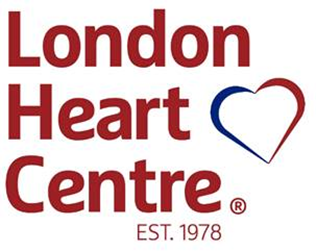Echocardiogram
Echocardiogram
What it is and how it works: An echocardiogram, or echo, is a painless and non-invasive test used to investigate the structure and function of the heart. It looks at the heart valves, heart chambers, and blood vessels. It uses sounds waves (or ultrasound) that are emitted from a probe onto the body, and that are then reflected off from the muscles and tissues of the heart to create a moving picture. The most common type of echocardiogram performed is called a transthoracic echocardiogram. This is where a lubricating gel and probe are placed onto the chest and moved around to produce an image. This is then displayed onto a monitor. Other types of echocardiogram include a transoesophageal echocardiogram, which is where a probe is passed down the oesophagus (food pipe), or a stress echocardiogram, which is done to see how well the heart works under stress. Usually, the whole test takes between 15 minutes to an hour.
What it detects: An echocardiogram can help detect a variety of conditions. These include damage from a heart attack, problems with the heart valves such as infection in the case of endocarditis, or heart failure – this is where the heart is unable to pump enough blood around the body.








